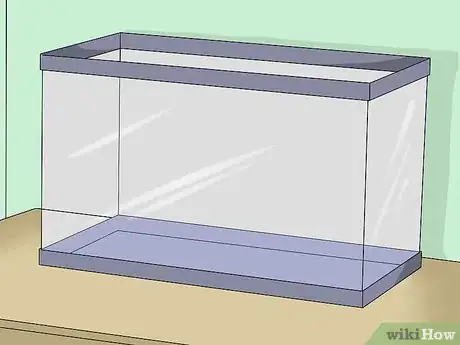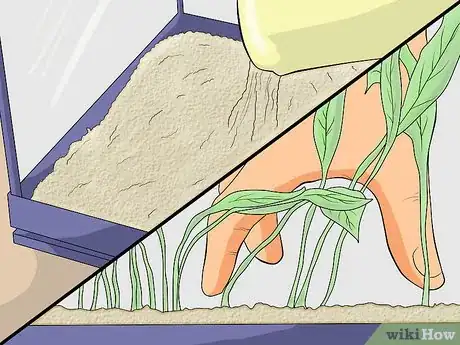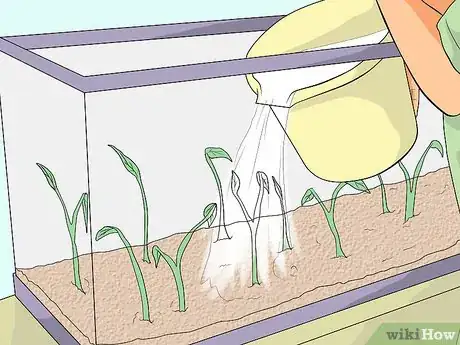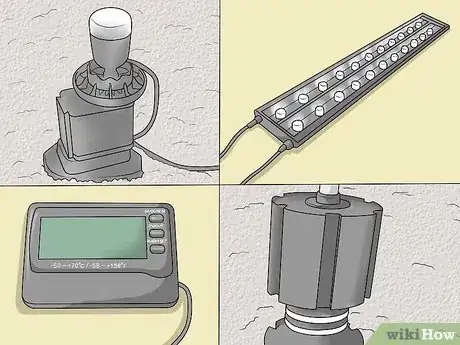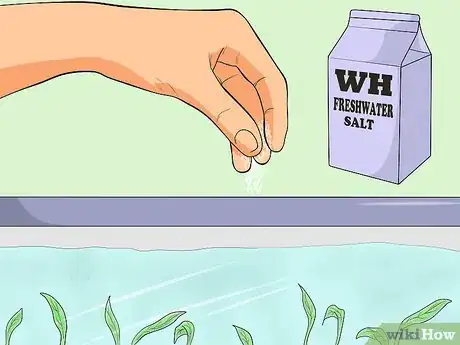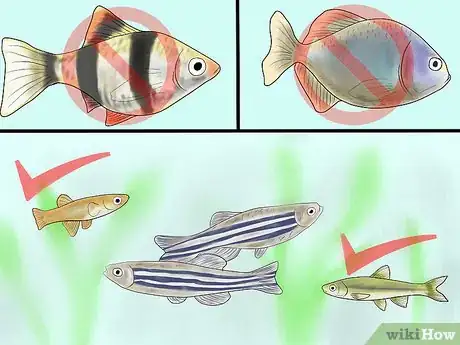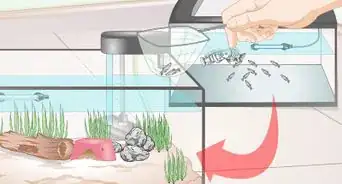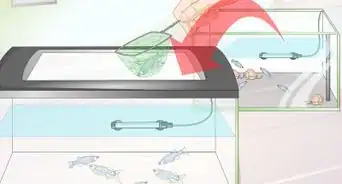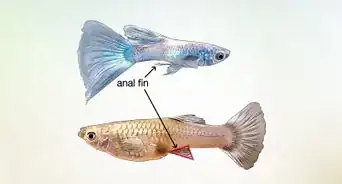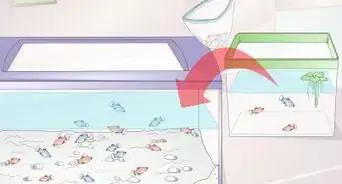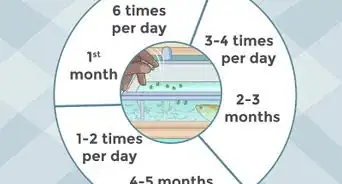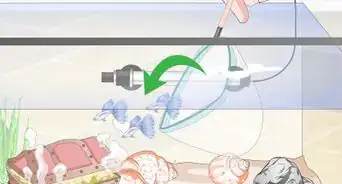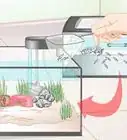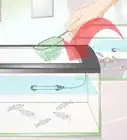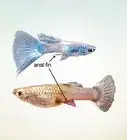wikiHow is a “wiki,” similar to Wikipedia, which means that many of our articles are co-written by multiple authors. To create this article, 23 people, some anonymous, worked to edit and improve it over time.
wikiHow marks an article as reader-approved once it receives enough positive feedback. In this case, 91% of readers who voted found the article helpful, earning it our reader-approved status.
This article has been viewed 89,986 times.
Learn more...
Danios are fun to watch and easy to care for, even for the novice aquarist. This article will show you how to care for these hardy, yet beautiful fish.
Steps
Setting Up the Aquarium
-
1Choose a tank large enough for a group of fish. Danios thrive in groups, the larger the better. Ideally you should have at least five or six danios, in a tank that holds at least 25 gallons (95 liters). A group of three fish in a smaller tank is acceptable, but can lead to stress or aggression. Never keep a zebra danio alone or in a tank smaller than 10 gallons (38L).[1]
-
2Add gravel and plants. Add a layer of well-rinsed sand or gravel to the base of the dry tank. Add a few plants and ornaments as well, but keep the taller ones at the perimeter of the tank. Danios are active fish that need plenty of room to swim at the mid-level of the tank. The decorations are necessary so the fish can hide, but should not interfere with movement.[2]Advertisement
-
3Add the water. If you are not familiar with aquarium care, read this article for more details. You may need to treat the water with a dechlorinator.
-
4Set up aquarium equipment. A filter, air pump, aquarium light, and thermometer are standard supplies for any aquarium. Danios prefer temperatures around 70–75ºF (21–24ºC). Depending on the temperature conditions of your home, you may need a heater to regulate this temperature.
- Danios like water movement. Make sure there is water movement from the water filter.
-
5Cycle your tank. It is very important to "cycle" a new aquarium for at least a month (not a day like some pet stores say!) before adding any fish. Use a test kit from an aquarium store to measure the amount of ammonia, nitrites, and nitrate. Do not add the fish until these measurements are stable at safe levels.
- Your test kit can also measure water pH (acidity). Danios do best in water pH from 6.5-7.2.
-
6Add freshwater salt (optional). Some hobbyists add freshwater aquarium salt to their tanks in small amounts, as directed on the product label. This is a little controversial among aquarium owners. A little salt can help the fish fight off disease, but too much can have unwelcome side effects.
- Only use freshwater aquarium salt, not ordinary salt.
- Do not add salt more than once between water changes. Salt does not leave the tank, so adding more can cause a lethal overdose.
Caring for Zebra Danios
-
1Acclimate the fish. As with any fish, danios should be introduced to the new tank slowly. Turn off the aquarium lighting and slowly introduce the aquarium water to the new fish's environment. The drip tube or floating bag methods are both good options.[3]
- If you have a large tank, introduce the new fish two or three at a time. Wait a week or two between introducing groups. This minimizes the disruption to your tank's chemistry, as well as stress on the fish.
-
2Keep them separate from aggressive fish. Zebra danios are not aggressive, so you can safely add smaller fish to the same tank. Avoid adding any aggressive fish species to the same tank.
- Although zebra danios are peaceful, they are active swimmers. Some fish species may prefer a calmer environment.
- Danios may be "fin-nippers", especially when they are not schooled with other fish.[4]
- A good aquarium store should have employees who can advise you on compatible species. Guppies, minnows, tetras, swordtails, corydoras (commonly cory cats) are good examples.
-
3Feed in small amounts only. Zebra danios do not need any special feeding care and are not picky eaters, but overfeeding is a common cause of problems for all aquarium fish. A fish's stomach is about the size of the fish's eye.[5]
- Each danio should only need a couple bites of food each feeding, 2–3 times per week, but can be fed each day if the other fish in the aquarium need feeding each day. Overfeeding can cause bloating as well as harmful chemical build-up in your water.
- Only feed the fish as much food as they can eat in 3 minutes. This is a general rule for all freshwater aquarium fish.
Community Q&A
-
QuestionDo I need to separate a pregnant fish?
 ImbisaleCommunity AnswerYes, or the other fish may eat the babies.
ImbisaleCommunity AnswerYes, or the other fish may eat the babies. -
QuestionWhat should I do if my male and female danios are chasing each other aggressively?
 Community AnswerMaybe get some hides and/or thick growing plants. If you already have these things, it would be best to separate the fish before they hurt each other.
Community AnswerMaybe get some hides and/or thick growing plants. If you already have these things, it would be best to separate the fish before they hurt each other. -
QuestionWhere do I get breeding tanks for Danios?
 Community AnswerYou can buy them online or at a pet shop.
Community AnswerYou can buy them online or at a pet shop.
References
About This Article
To care for zebra danios, keep them in a group of 5 or 6, since danios thrive in large groups. Additionally, give them plenty of room to swim by housing them in a tank that holds at least 25 gallons of water. Then, make sure to equip your tank with a filter, air pump, and aquarium light, and keep the water temperature at around 70 to 75 degrees Fahrenheit. You’ll also need to feed your danios 2 to 3 times a week, but only give them as much as they can eat in 3 minutes per feeding. For more advice, including how to acclimate your zebra danios to a new tank, keep reading!
